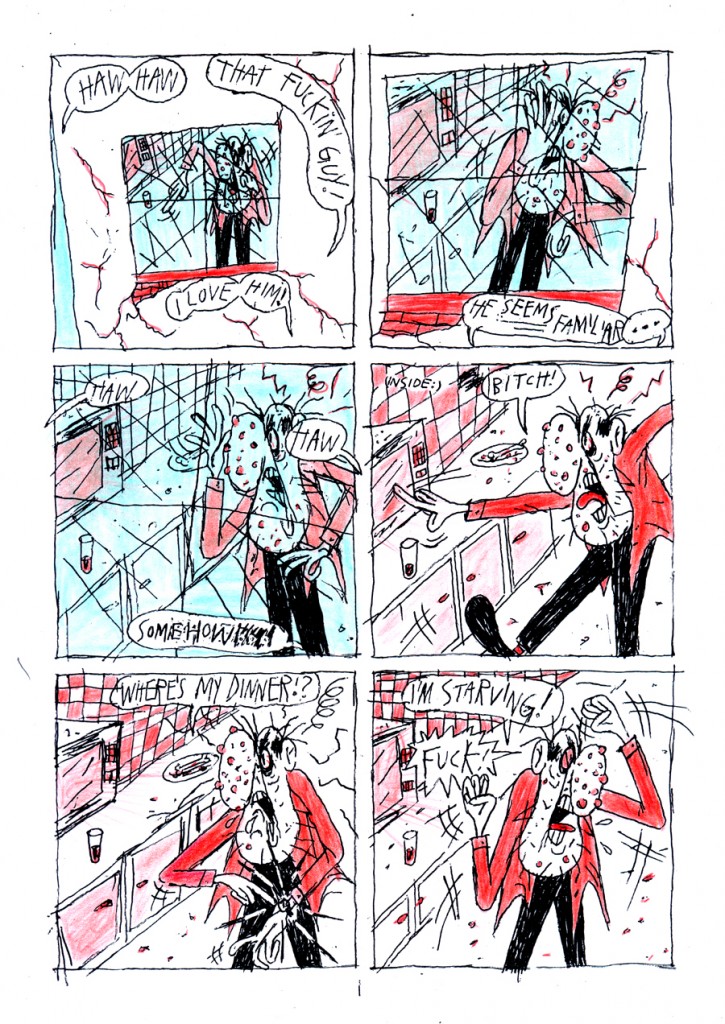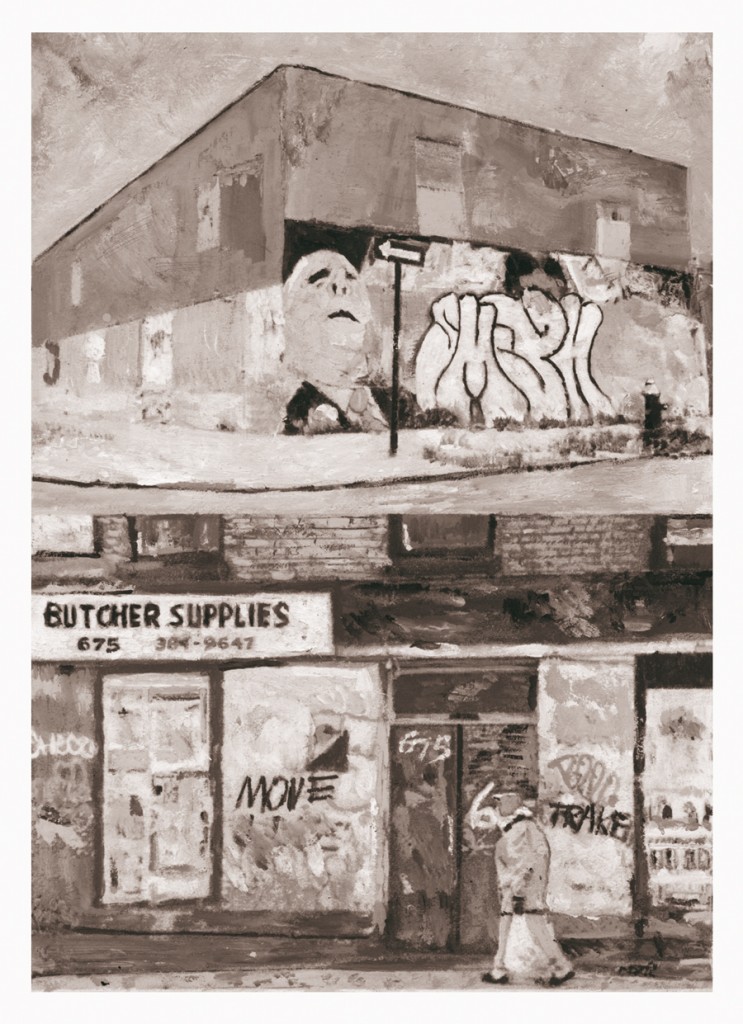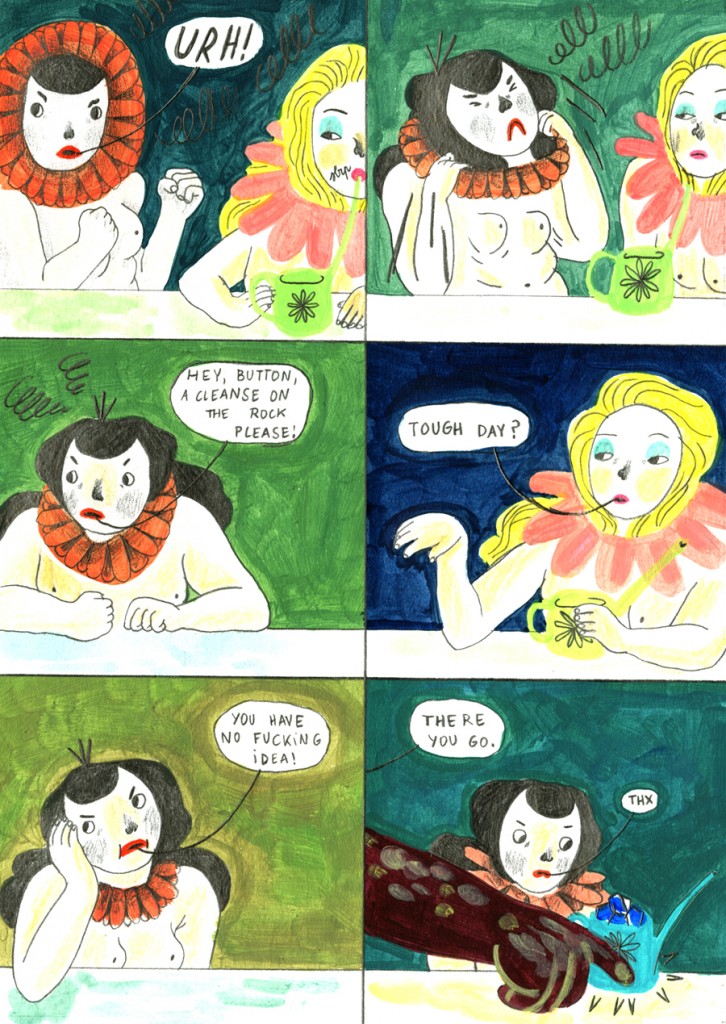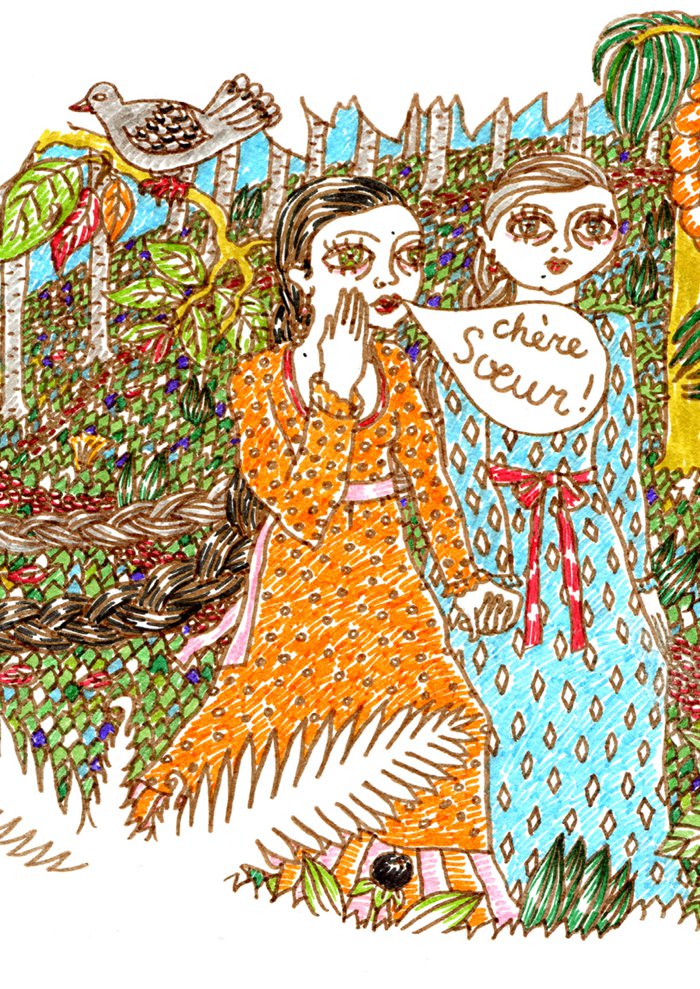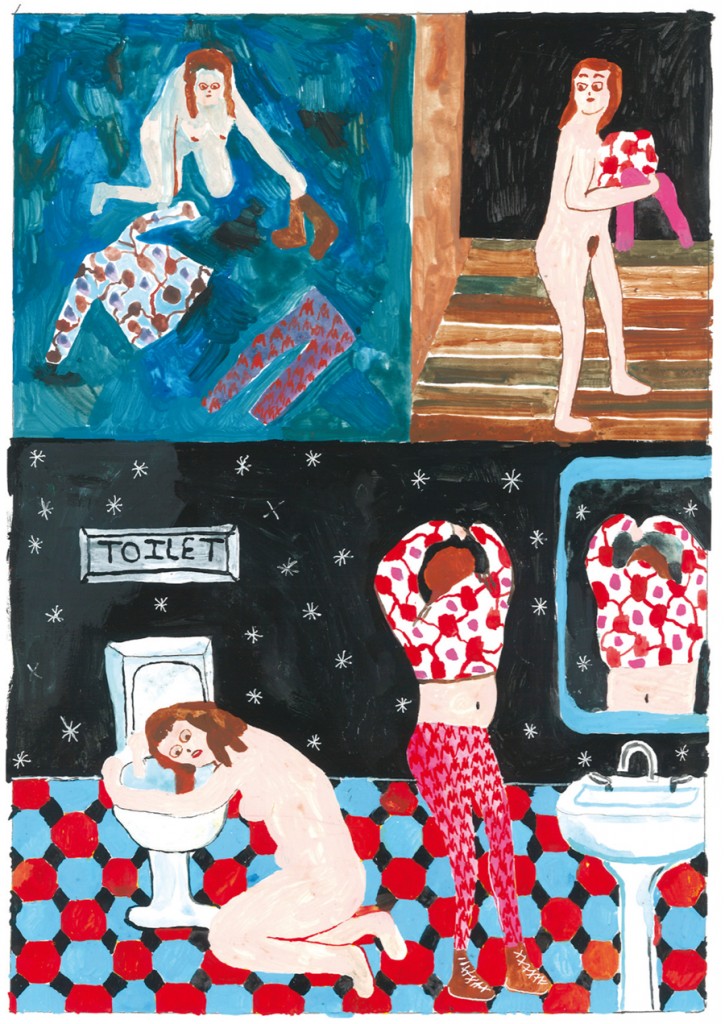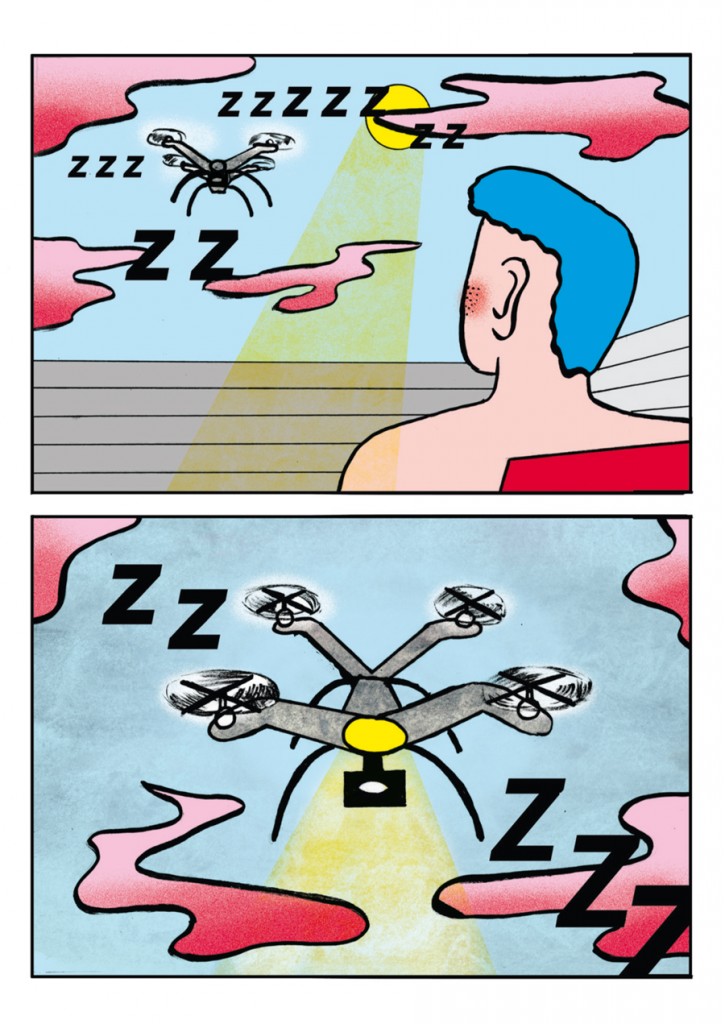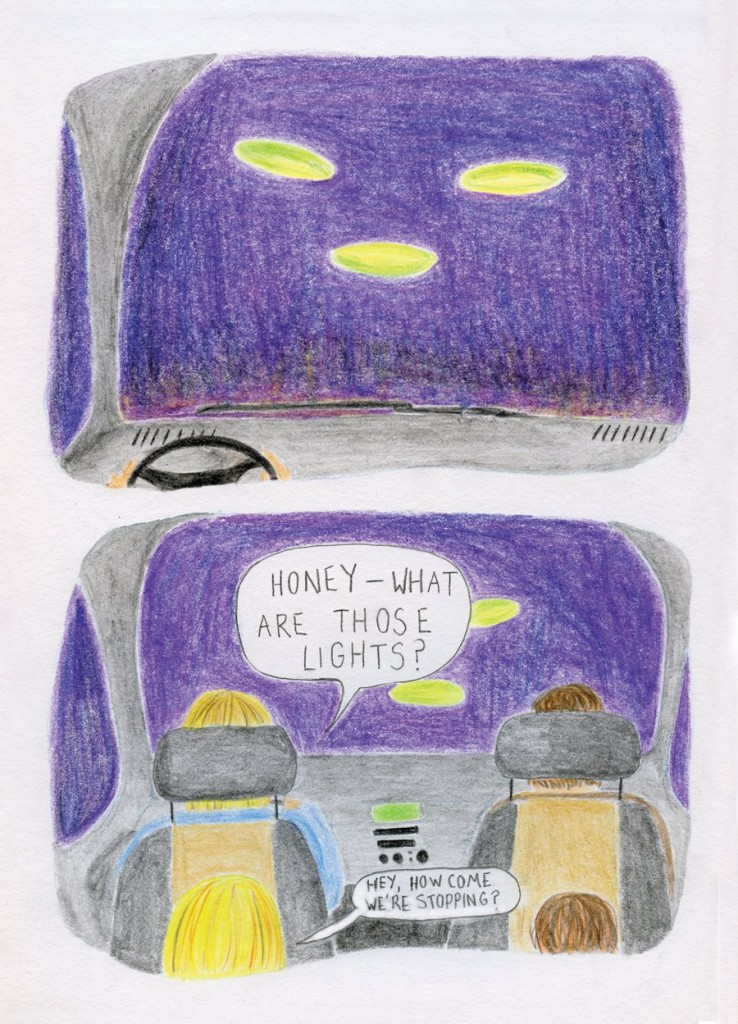While the new issue of š! is hot off the press featuring Western artists inspired by Japanese manga, I’m taking some time to translate this review I published in Italian a few months ago about the previous release of the Latvian anthology and the latest mini-kuš!, now including the most recent one by Laura Ķeniņš. š! #24 is introduced by a beautiful cover by Līva Kandevica and showcases over twenty short comics by international artists, this time around the theme Urban Jungle. If the mood of these A6 booklets is mostly playful and ironic, in every issue there are some different voices, which can be rough, meditative or abstract. For example, in the fashion-themed anthology (š! # 22), Hetamoé’s and Léo Quievreux’s contributions reinterpreted the main theme as something deeply and disturbingly connected to body and flesh. And the same Marie Jacotey, who created the cover and the opening story, is a pleasantly atypical cartoonist, who hides under her colored pencils a crudeness in both line and content.
And so, which are the “lone voices” of this release? My preference is definitely for Abraham Diaz, a Mexican cartoonist born in 1988 recently seen in Kramers Ergot #9 and of whom I’ll talk again very soon on Just Indie Comics. Diaz has a messed-up cartoon style and draws characters with huge heads and expressions between the stupid and the pissed off. His art is full of lines going on their own, of colors that don’t ever fill the whole space of the figures, of a crooked lettering reporting humorous and absurd dialogues. G.W. Duncanson is another artist aesthetically alien from the rest. His beautiful urban art contribution displays a pictorial black and white made up of graffitis, subways, skyscrapers. This is one of these š! comics I would like to see published in a larger size one day.
Both Diaz and Duncanson are debuting artists in the magazine and this means the editors David Schilter and Sanita Muižniece are successful in finding new names to add to the usual ones. This is confirmed by two other newcomers, more in line with the general tone of the anthology. The first is Sami Aho of the Finnish collective Kutikuti: Fooled Again is at first sight similar to Anya Davidson’s work and is an entertaining and accomplished short story with a great underground feeling of yesteryear and bright colors. Mathilde Van Gheluwe of Tieten met Haar is another new name in š! and her debut conquers immediately with warm watercolors, a charming style reminiscent of the other Flemish Brecht Evens and a precise and effective storytelling. But there are also interesting contributions by some regulars in this issue. Dace Sietina’s style is constantly growing and now is closer to the aesthetics of Russian art from ’50s and’ 60s, Amanda Baeza leaves aside geometry for once and creates a nice figurative work in black and white, while Jean de Wet confirms the good things he already showed in the mini-kuš! #20 (I talked about it here).
And speaking of mini-kuš!, let’s have a quick look at the latest fives, all by female cartoonists. The mini-kuš! #38-41 were published last March, while the #42 was out in May. Three Sisters is the title of the first one by Latvian artist Ingrīda Pičukāne, about three girls who find a drunk and naked man in the middle of the forest. The women speak in French, the man in Russian, and there aren’t subtitles, a choice that gives authenticity to the story. The booklet is a twisted fairy tale developing horizontally, with a white frame at the edges of the pages that encloses the colorful forest, rendered with an appealing mosaic effect, while the women are typified from big, exploding eyes, symbols of an intense sensuality. The charm of Pičukāne‘s work is even more powerful in the original art, that was part of a kuš! exhibition at the latest Ratatà festival in Macerata (you can see some pictures here).
Colorful but with a more contemporary style is the mini-kuš! #39 by American cartoonist Tara Booth, who has also a funny three-page comic in Urban Jungle. Unwell is the story of an out-of-ordinary day in the life. The protagonist wakes up alongside an unlikely hipster, sneaks away after puking in his toilet, gets on a bike, thinks back to when she put her panties on the lover’s head, creates a painting with the ass (literally), goes out with her dog, meets a pervert in the park, gets drunk again… I won’t tell the ending but everything works perfectly in this wordless comic that might seem a silent film, drawn in a patchwork style reminiscent of South Park and with a great use of color. The page is completely at the service of the girl, so that the panels sequence is often broken by her vertical movements on the page. Unwell is definitely an excellent example of a successful mini-comic.
If these two booklets have a dionisiac and lively mood, the mini-kuš! #40 by Hanneriina Moisseinen looks algid and rigorous. 1944 tells, as the title suggests, a war episode, namely the evacuation of Carelia, drawn by the Finnish cartoonist in parallel with the birth of an animal, representing the cruelty of nature and war together. The linear plot would need a decisive surge and Moisseinen’s pencils and panel grids are a little too straightforward on this occasion, even if the story is brutally poetic in its very own way.
The mini-kuš! #41 is a great opportunity to admire a technicolor comic by Aisha Franz, committed to depict a not-so-far future made of apartment complexes, drones, changing sexual identities, pleasure machines. EYEZ isn’t a strong narrative work but relies mostly on the visual approach and on a simplified line compared to previous Franz’s work as the Alien graphic novel. But this hyper-pop version of her fascinates and conquers, so that we want more and more. And soon, if it’s possible.
The 42nd mini-kuš! was released in May and features Alien Beings by Latvian-Canadian cartoonist Laura Ķeniņš, whose work was published before in š! #19 Mathematics and in š! #21 Business Time. This is a story about aliens and divorce, with the title indicating both the extraterrestials the family supposedly met in the first pages of the mini-comic and the two parents becoming “aliens” the one with the other (and also with their children). The colored pencils used by Ķeniņš are perfect to illustrate a story saw in first person from the daughter of the couple, a coming-of-age tale about growing up in a divided family. In the end the close encounter seems a too-simplistic justification for the break-up and the human relationships are the real unidentified object. Ķeniņš focuses on the girl’s feelings and on the dynamics of the divorce, building a strong, intense and cohesive story.


